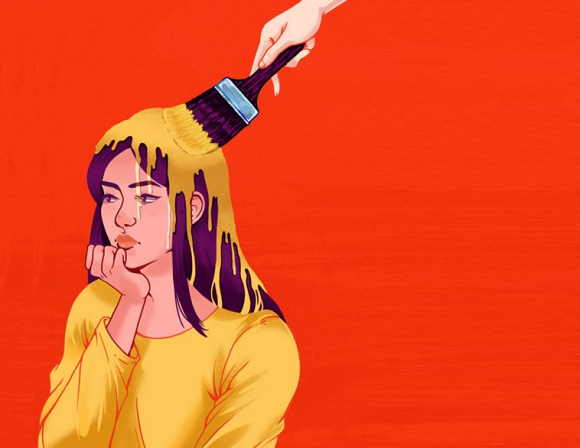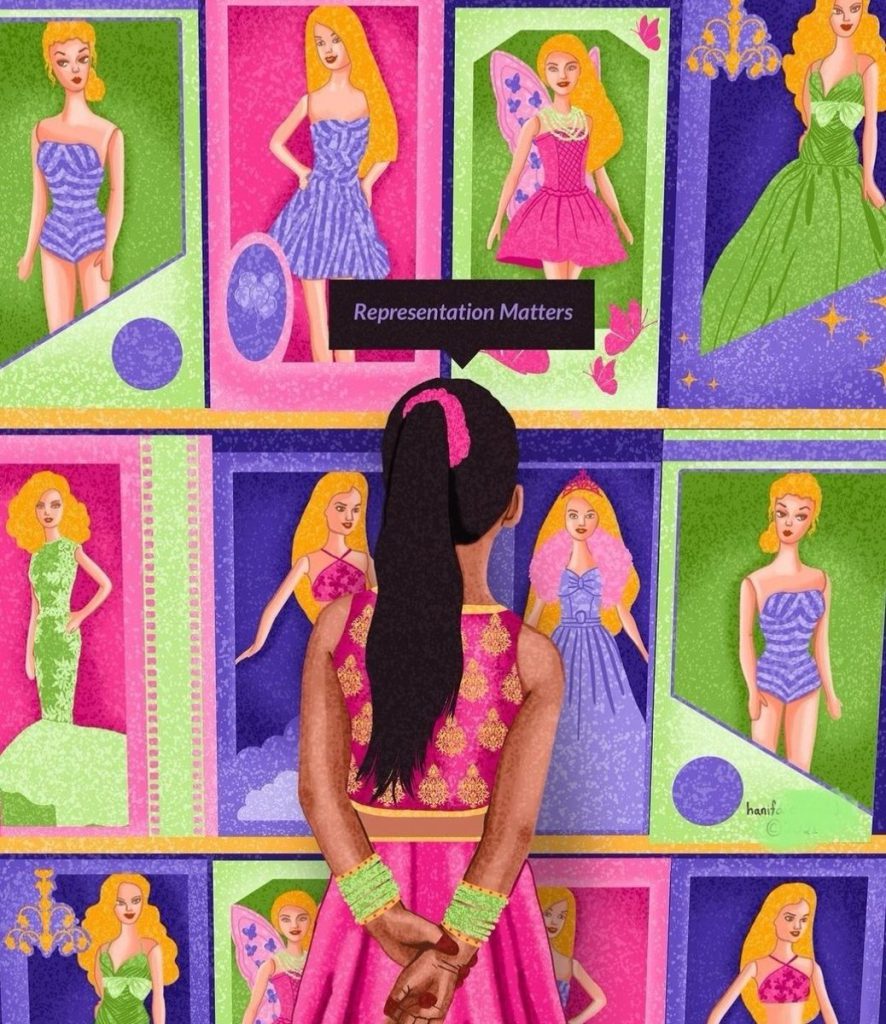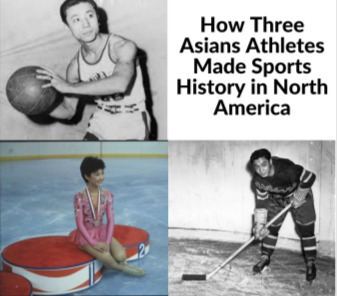Have you ever read a novel where the main character is Asian or a BIPOC? It’s safe to say that many of us have read some books with BIPOC characters in them. However, the representation of BIPOC characters hasn’t been predominantly seen in books, especially as main characters, till the mid-2010s, with the uproar for the long-needed representation and diversity in books. Sure the characterization of BIPOC people was not uncommon in fiction before the mid-2010s, but often they were pushed to the side, villainized, or just simply fulfilling a stereotype.
It was hard for us, BIPOC people, to find a sense of representation or relation to these side characters. How could we find a role model in a character who only had two lines in a whole book or who sat quietly in the corner studying? Is this how we are supposed to act as if this is how we’re seen? Representation is important in the media and books because it allows minorities to see some version of themselves being heard and seen. It lets us know that our voices are important, relatable, and wanted.
Not having representation is like looking at yourself in a river rather than a mirror. You don’t really have a clear or positive image of who you are and what you can be. And how can we if all we ever see or read about is our identity being pushed aside or stereotyped? This can often make us feel like our story isn’t important enough to be told. The representation through the depiction of us in novels is one way that calls to be done correctly and accurately, especially if an author is not a BIPOC or not of the BIPOC group you’re writing about. I’m sorry and not sorry to say that a simple google search will not do.
In this article, I will explore how Asian characters are depicted in novels. Although my focus is on Asian characters, I hope, in some way, other BIPOC people can relate to how some depictions of us BIPOCs aren’t necessarily correct and have a tendency to follow a long engrained pattern in the world of fiction.
Depiction
I could go on for hours about how the depiction of Asian characters by non-Asian authors over the years are simply wrong. Many depictions of Asians are filled with stereotypes, and casual racism has been overlooked and, in some cases, normalized to the point where readers brush past them.
Depiction of Asian characters is one reason why stereotypes have stuck to us and why many feel held by these stereotypes because it’s all that they have seen/read about. It can be harmful to AAPIs because it sets an expectation to be a sort of Asian and to achieve these “Asian” standards as well as encourages the degradation of Asian people and fetishization of us.
Many of these depictions are made from assumptions and long-held stereotypes that are not thoroughly researched, and most importantly, are not our voice. It’s not until we read a novel written by a person of our race, culture, identity, etc. is when we finally see the true representation of us. It’s a matter of knowing and relating to your readers on a deeper level.
Asian characters in fiction are often labeled with some sort of stereotype, trope, or even used to some level as a way to add something to the story or character arc without giving the Asian character any substance. Here are examples of how Asian characters are depicted and characterizations writers should avoid.
Microaggressive stereotypes
Asian characters in fiction are often labeled with some sort of stereotype, whether it be the quiet/shy kid, the smart/prodigy type, calculative/vicious person, etc. the list goes on.
The most common trope to be found in novels is Asian-Americans being labeled as overachievers or smart ones. Sure it’s nice to be described as hardworking, but it turns the attention away from other characteristics we have and the idea that we face some of the same struggles as the main or other characters. Showcasing us as only overachievers with a high success rate only enhances the model minority myth painting us as the “typical Asian.” But really, what is the “typical Asian”? It creates a standard for us to achieve and be the “typical Asian.” When in reality, Southeast Asians are some of the people with the highest dropout rate. It is depicting us as such holds the expectation that since you’re Asian, you’re already smart, and when we don’t meet these expectations/assumptions by society, we somehow become “less” Asian.
Tokenism or the Safety Pass
Tokenism is often seen as a way for authors to include diverse characters based solely on their race or identity. In books, they are often portrayed as the token friend of the main character, showcasing or enhancing the main character’s “goodness” or “woke-ness” because they have accepted this diverse character as their friend. Sometimes and if not often, these token characters are used as a way for authors to showcase their own “goodness” or “woke-ness” because who knew diversity could exist beyond reality.
An example of tokenism is the gay/queer or coloured best friend of the protagonist used for diversity and comic-relief. It can often seem in some ways out of the blue especially if the token character is the only BIPOC or LGBTQ+ character out of everyone. Authors often include these token characters to diversify their story, but you don’t have to mention our race and/or identity all the time to remind readers that your protagonist is kind and accepting of all identities. Our identities and culture shouldn’t be the sole reason for the protagonist “goodness” or “heroism” nor should you include us for diversity gain or cover up your ignorance. You can read more about tokenism on our Instagram post about being the token friend: I’m Not Your Token Friend
Similar to tokenism Asian characters are used as a safety pass. It is often seen in the media that it is also uncommon in books for an author to include diverse characters to make them seem not racist or less racist because they included a BIPOC character. In certain social climates where racism and representation are brought up, creators of media and writers who don’t include diversity in their work are quick to include them in the event of proving they’re not problematic. In this case, we are then used as a safety pass or a sign that reads, “hey this person despite their lack of diverse characters, is definitely not racist.”
Casual racism
In books, casual racism is often due to a lack of research or just ignorance because of the commonness of casual racism in fiction over the years.
Casual racism and not so casual racism includes:
- Describing BIPOC’s by comparing us to food (ex. (dark) chocolate, caramel, coffee, etc.)
- Using white/light as a sign of purity and dark as an impurity.
- Naming Asian characters wrong (ex. Cho Chang in ‘Harry Potter’ is an Asian character with a Korean last name as her first name and a Chinese last name and I don’t think I need to say more about her name after saying “Cho Chang” and Park from ‘Eleanor and Park’ a Korean-American with a Korean last name as his first)
- Depicting us in our stereotypes.
- Saying we have an accent when we speak English.
- Including the white saviour complex or having the white character save the BIPOC character.
- Having us turn into magical dragons or tigers or our characters have a dragon/tiger side kick in fantasy books.
- Asian = Chinese
- We have cat eyes, aka slanted eyes.
- Using words such as foreign or oriental.
Sexualization and Desexualization
Female Asian characters are often described as submissive, petite, innocent, doll-like, exotic, geishas, etc. Male Asian characters are often described as unmanly, geeks, girly looking, weak, ineffectual, etc. In the past, Asian characters were described/depicted to either sexualize or desexualize them. Especially if they’re a side character/potential love-interest, the sexualization or desexualization of Asian characters either makes us a more desirable or undesirable partner based on these common tropes rather than personality and substance.
Sexualizing or desexualizing our characters is very harmful to our identity as Asians. If we are sexualized because we hold submissive or innocent traits, we feel as though we become undesirable for a relationship if we aren’t “submissive” or “innocent.” Most commonly linked to female Asian characters, we are depicted as small and easily taken advantage of, which could be harmful in reality since these sexualized tropes are not true nor right to enforce. If we are desexualized because we are nerdy, weak, abusive, or in the Asian males case effeminate, they become undesirable or unfit to be in a relationship. Sticking Asian males with the trope of being effeminate paints them as undesirable to be in a relationship with in the public eye. Being feminine or having feminine traits shouldn’t be something that makes a person undesirable. The exoticness aspects also ensure the fetishization of us and our culture/race. We are then seen as a sort of treat or foreign object that becomes the treasure or belonging of another instead of being seen as a person. Our race, culture, and identity are not for you to sexualize or desexualize.
Is It Okay To Tell Our Story? And What Can You Do?
Whether you are a BIPOC or a white author, it solely depends on what you want your book to be about and the amount of research you put into telling the stories of another. Similar to historical fiction and accounts, it takes a lot of research to understand the context and the feelings behind someone else’s story. You can’t just do a quick google search on the life of a typical Asian-American because there isn’t a “typical Asian” we all have different stories and perspectives.
Research is key. Simple google searches about the most commonly Chinese, Indian, etc., last name or random Asian holidays are not enough to tell our story. (Sorry, this does include you JK Rowling and Rainbow Rowell for Cho Chang and Park.) We are more than just a foreign name, face, or holiday. We have lives, struggles, emotions, and stories to tell.
With Asian characters, it’s best to be clear about who you are talking about. Being vague about the race of your Asian character by describing them as petite, slanted eyed, or “Chinese-like” only gives off casual racism as you’re enforcing the “all Asians look alike” misconception. You can even opt to describe Asian characters as Southeast Asian, West Asian, East Asian, and Central Asian if you’d rather not specify, especially if the character is passing by.
You also need a reason for including diversity in your writing that is not just having us as the token friend or the diverse side character just to show you’re not racist. Be willing to hear our story and leave all those stereotypical tropes Asian characters are labeled with. Don’t be afraid to ask us Asian-American’s for accuracies and our experiences. We are here to help you because we want to see good representation as much as the next person. Asking us will give you a better and deeper understanding of the identity you want to depict/include in your story and avoid controversies.
As writers, you have a role in representing the voices of those who are brushed over to the side or marginalized. Sharing stories is your talent. So share your voice and stories whether you be Asian, BIPOC, or a non-BIPOC, but remember the importance of good representation!
For further reading on what you can do, check out Vulture’s article Who Gave You the Right to Tell That Story?
Sources
https://www.vulture.com/2019/10/who-gave-you-the-right-to-tell-that-story.html
https://discover.submittable.com/blog/dear-white-writers-please-stop-doing-these-things/
https://bookriot.com/casually-racist-things-that-white-authors-do/
https://hyphenmagazine.com/blog/2016/02/dear-non-asian-writer
Cover Source: https://medium.com/@carlabraga/hollywood-and-its-obsession-with-white-actors-portraying-asian-ones-a7c136af9cb5
Edited by Karina Fathani



